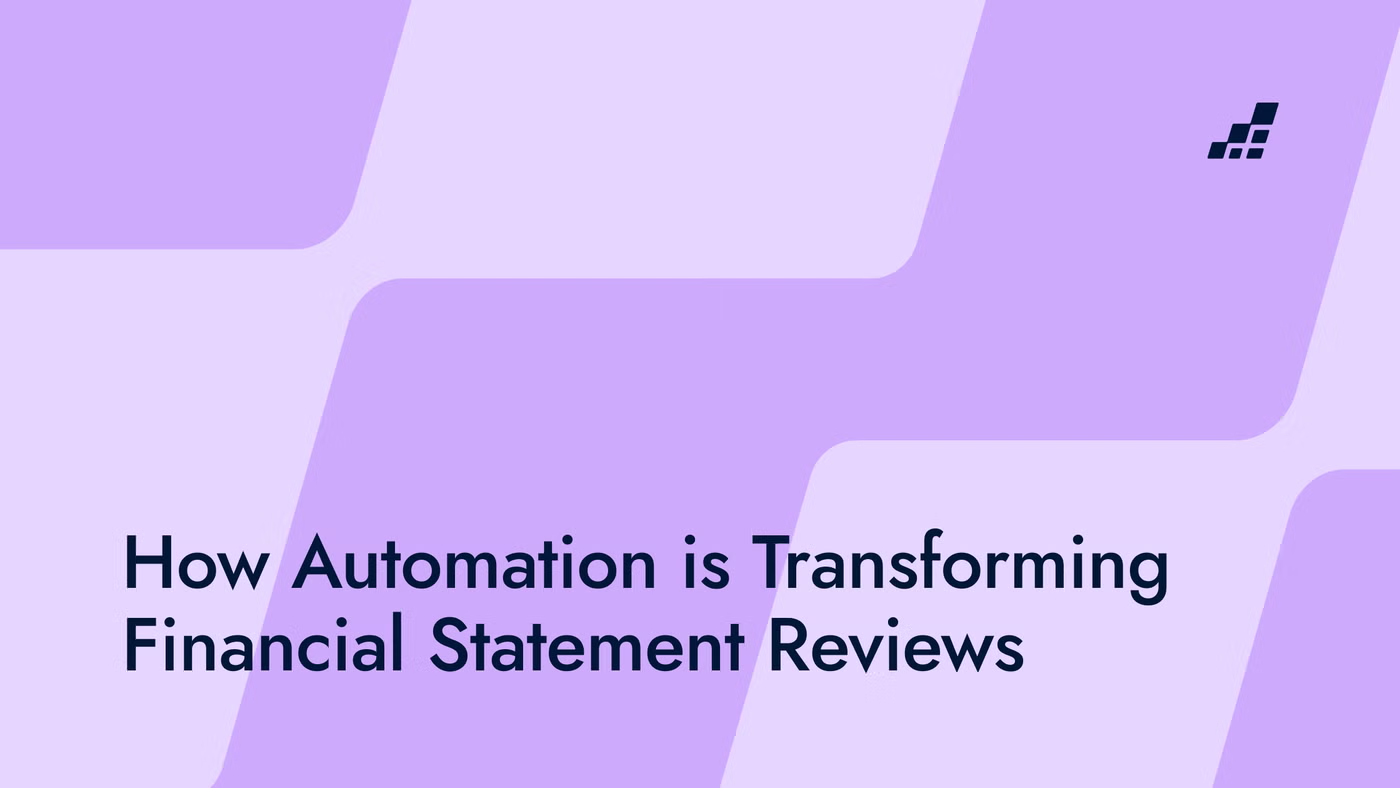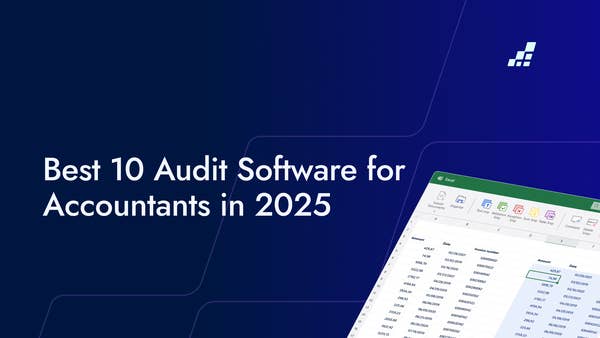- /
- Blog
How Automation is Transforming Financial Statement Reviews

Financial statement reviews are crucial for understanding your company's financial health and making informed decisions. But the traditional manual approach is slow and error-prone, impacting you and your team's efficiency.
In this blog, we'll explore how automation can revolutionize financial statement reviews, benefiting your entire team.
The Importance of Accurate Financial Statement Reviews
As a finance professional, you understand the significance of accurate financial statement reviews. They serve as a cornerstone for assessing a company's financial performance and stability, guiding strategic decisions, and ensuring compliance with regulatory standards.
However, manual reviews often entail labor-intensive tasks like data collection and analysis, which can be time-consuming, costly, and prone to errors. These challenges not only strain resources and increase operational costs but also dampen efficiency, making your team's roles less fulfilling and potentially impacting motivation.
Therefore, implementing automation solutions is essential to streamline the review process, reduce errors, and restore efficiency, ultimately empowering your team to focus on more strategic initiatives and driving success.
Empowering Your Team in Financial Statement Reviews with Automation
Automation technology is the key to tackling challenges in financial statement reviews. By automating tasks like data entry and analysis, your team saves time and improves accuracy, freeing them for more strategic work.
This shift to strategic tasks not only boosts efficiency but also offers a more fulfilling work experience for your team. When employees can focus on higher-value activities, it reduces burnout and increases job satisfaction, ultimately lowering attrition rates.
Moreover, by creating a more engaging work environment, your firm becomes a more attractive place for top talent, driving growth and success.
Automation streamlines processes, making work easier and more efficient. It removes the risk of errors, ensuring reliable reporting and compliance. Additionally, advanced features like data validation and trend analysis offer deeper insights, empowering your team to make informed decisions.
Benefits of Automating Financial Statement Reviews
For finance professionals like you, automating financial statement reviews offers numerous benefits. Here are some of the biggest benefits:
Efficiency Boost: Automating financial statement reviews reduces the time spent on manual tasks, freeing up valuable resources that can be allocated more strategically within your team.
More Time for Strategic Tasks: Automation frees your team from routine tasks, allowing them to focus on critical activities like financial analysis, forecasting, and strategic planning. This enhances productivity, boosts talent retention, and improves overall happiness within your team.
Improved Accuracy: Automation ensures the accuracy of financial data, minimizing the risk of errors commonly associated with manual data entry and analysis. This not only enhances decision-making but also improves public opinion and increases the likelihood of attracting more clients.
Reliable Decision-Making: With accurate financial data at your fingertips, you can make informed decisions with confidence, driving better outcomes for your organization. This reliability further solidifies your organization's reputation and fosters trust among stakeholders, potentially leading to increased business opportunities.
Increased Transparency: Transparent processes enable clear communication and collaboration, fostering a culture of accountability and teamwork within your organization.
Accelerated Decision-Making: Streamlined collaboration expedites decision-making processes, enabling your team to respond quickly to changing market conditions and opportunities.
7 Tips for Implementing Automation in Financial Statement Reviews
Implementing automation in financial statement reviews requires careful planning and execution to maximize the benefits and ensure a smooth transition.
- Assessment and Planning: Identify pain points, inefficiencies, and error-prone areas. Evaluate how your team handles data tasks to pinpoint time-consuming activities. Set clear objectives for automation, aiming to reduce workload, minimize errors, and improve accuracy, while boosting team motivation.
- Choose the Right Automation Software: It’s that simple right? Prioritize ease of use and seamless integration. Ensure the solution offers robust data security and scalability. Look for comprehensive training and ongoing support to maximize team potential. Communicate benefits clearly and consider a testing period for feedback.
- Train, Train, Train: Train your team so they experience the benefits firsthand. Select software with thorough training and strong customer support. Conduct initial training covering technical use and result interpretation. Offer ongoing support for a smooth transition. Well-trained team members lead to better outcomes.
- Change Management: Clearly communicate with your team about the upcoming changes and the benefits of automation, such as saving time and reducing errors. Address any concerns they may have and provide support to help them adapt. Lead by example and show confidence in the new system to ease the transition. Be open, be supportive.
- Monitoring and Evaluation: Continuous monitoring and evaluation of new software are crucial to ensure it meets your objectives. Track performance to verify it reduces errors and saves time. Regularly gather team feedback to identify issues and make necessary adjustments. Ongoing evaluation ensures the system delivers desired benefits and adapts to your organization's needs.
- Documentation and Compliance: Thorough documentation is crucial for transparency and accountability. Keep detailed records of implementation, changes, and updates. Ensure automated processes meet financial regulations. Good documentation tracks progress, serves as a reference for audits, and ensures compliance.
- Try Before You Fly (Pilot Testing): Before fully implementing automation, start with a pilot test in a smaller area. This phased approach allows you to evaluate effectiveness, make adjustments, and ensure the software meets your needs. Use insights from the test to refine your approach and ensure a smooth transition when expanding automation.


.png?width=600&quality=70&format=auto&crop=16%3A9)